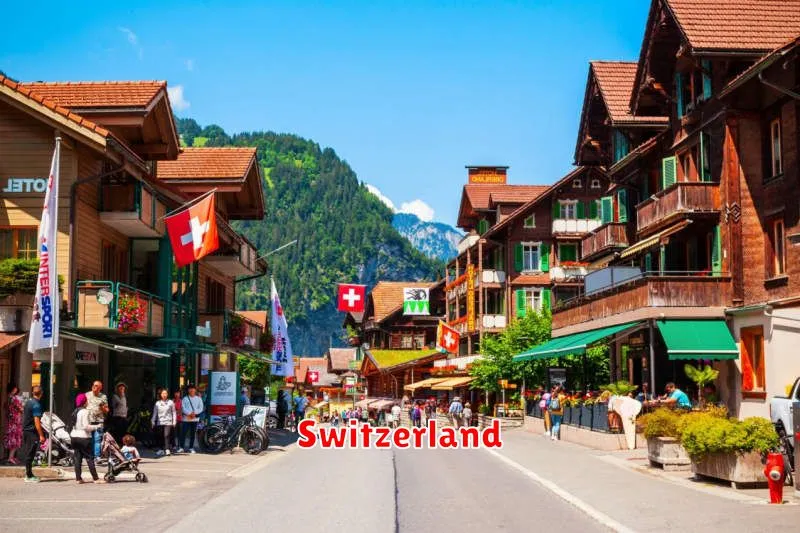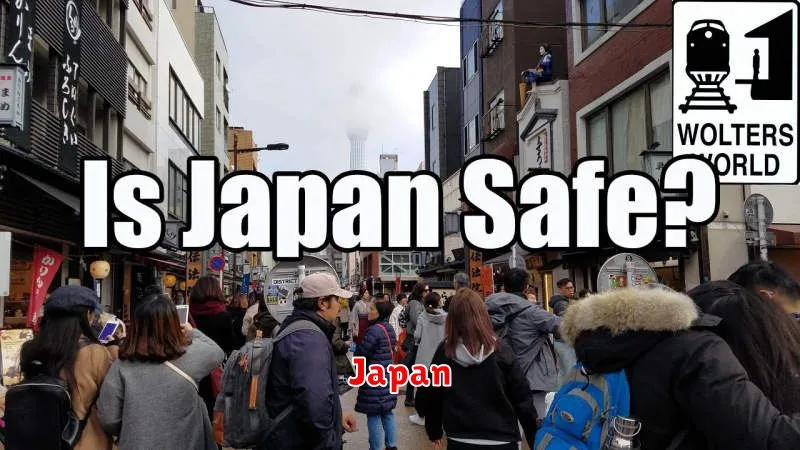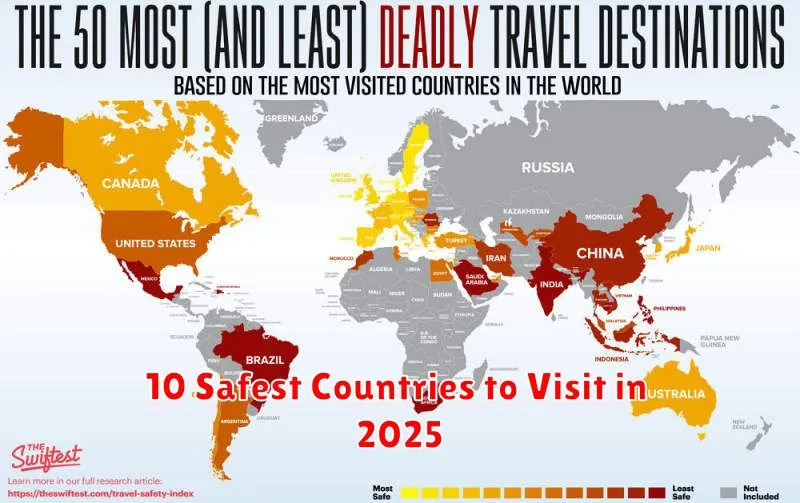Planning an international trip in 2025? Safety is paramount. This article presents the 10 safest countries to visit in 2025, providing you with essential information to plan a secure and worry-free vacation. Choosing a safe destination is crucial for a truly enjoyable travel experience, and this carefully curated list highlights countries known for their political stability, low crime rates, and overall peaceful environments. Whether you seek adventure, cultural immersion, or relaxation, this guide will help you discover incredible destinations where safety is a priority.
Explore diverse landscapes, vibrant cultures, and historic sites with confidence knowing you’re choosing amongst the safest countries for travel in 2025. From breathtaking natural beauty to bustling cityscapes, these countries offer a wealth of experiences without compromising on security. Read on to discover the top 10 safest travel destinations for 2025 and start planning your next unforgettable adventure.
How Global Safety Rankings Are Measured
Assessing the safety of a country involves analyzing various factors, often compiled and weighted by international organizations and research institutions. These rankings aim to provide travelers and businesses with a comparative overview of risk levels across different nations.
Key indicators often include:
- Crime rates: Including violent crime, property crime, and organized crime.
- Political stability: Considering factors such as terrorism, civil unrest, and political violence.
- Health risks: Encompassing infectious diseases, healthcare infrastructure, and emergency services.
- Road safety: Evaluating road infrastructure and traffic accident statistics.
- Natural disaster risk: Examining the likelihood and potential impact of natural events like earthquakes, floods, and storms.
It’s crucial to remember that these rankings offer a general overview. Specific regional differences within a country may exist, and individual experiences can vary.
What Makes a Country Safe for Tourists
Several factors contribute to a country’s safety reputation for tourists. Low crime rates, particularly violent crime and crimes targeting tourists like theft and scams, are crucial. A stable political climate free from unrest or conflict significantly impacts safety.
Effective law enforcement and a reliable judicial system are also essential. Tourists need to feel confident that authorities will protect them and address any legal issues fairly. Developed infrastructure, including reliable transportation and communication networks, further enhances safety by allowing tourists to navigate and seek assistance easily.
Healthcare quality is another important consideration. Access to quality medical facilities and personnel provides reassurance in case of illness or injury. Finally, cultural factors, such as a generally welcoming and tolerant attitude towards foreigners, can contribute significantly to a positive and safe experience for tourists.
Switzerland

Switzerland consistently ranks among the safest countries globally, making it an ideal destination for travelers. Its political neutrality and stable economy contribute significantly to its overall safety. Violent crime is rare, and petty theft is the most common concern, primarily in tourist-heavy areas.
The efficient public transportation system further enhances safety, allowing for easy and reliable travel throughout the country. Furthermore, Switzerland boasts a high standard of living and a strong rule of law, ensuring a secure environment for residents and visitors alike.
Emergency services are readily accessible and highly responsive, adding another layer of security. While in Switzerland, practicing standard safety precautions, such as being aware of your surroundings and safeguarding your belongings, is always advisable.
Japan

Japan consistently ranks as one of the safest countries globally. Its low crime rate, coupled with a culture of respect and order, makes it a secure destination for travelers. Petty theft is rare, and violent crime is exceptionally uncommon.
Cultural norms play a significant role in Japan’s safety. The emphasis on politeness and consideration for others contributes to a harmonious society. Additionally, the efficient and reliable public transportation system further enhances safety, allowing travelers to navigate easily and without concern.
Emergency services are readily available and responsive throughout Japan. This, combined with the general helpfulness of the Japanese people, provides travelers with peace of mind.
Finland

Consistently ranked among the safest countries globally, Finland offers travelers peace of mind alongside stunning natural beauty. Its low crime rates and stable political climate contribute to a secure environment for both residents and visitors.
Finland’s commitment to social equality and the rule of law strengthens its safety profile. Efficient and trustworthy law enforcement further enhances the sense of security. Visitors can comfortably explore the country’s vast wilderness areas and vibrant cities, knowing they are in a protected environment.
Key Safety Aspects
- Low crime rates: Finland consistently reports low rates of violent and petty crime.
- Political stability: The country boasts a stable and transparent political system.
- Reliable law enforcement: A well-respected and efficient police force contributes to public safety.
Norway

Norway consistently ranks high on safety indices, making it an attractive destination for travelers. Low crime rates and a stable political environment contribute to this perception of security. Visitors can generally feel safe exploring both urban areas and the stunning natural landscapes Norway is known for.
Emergency services are easily accessible and efficient. Furthermore, the country boasts a high level of social trust, which further enhances the overall sense of security.
While petty theft can occur in tourist areas, exercising basic precautions can mitigate this risk. Overall, Norway offers a safe and enjoyable travel experience for those seeking peace of mind on their adventures.
New Zealand

New Zealand consistently ranks highly on global safety indices. Its low crime rates, political stability, and effective emergency response systems contribute to a secure environment for visitors. Natural disasters, however, are a consideration, with earthquakes and volcanic activity possible.
The country’s robust infrastructure and well-maintained transportation networks further enhance safety. Road safety is generally good, though driving on the left side of the road can require adjustment for some. Petty theft is the most common crime targeting tourists, so practicing basic precautions is advisable.
Iceland
Iceland consistently ranks high on safety indices, making it an appealing destination for travelers. Its low crime rate and strong social welfare system contribute to a secure environment. Police presence is minimal, reflecting the general peacefulness of the country.
Natural hazards, such as volcanic activity and glacial floods, are potential risks. However, Iceland has a robust emergency response system in place to manage these events effectively, mitigating potential dangers to residents and visitors. Staying informed about local advisories and weather forecasts is recommended.
Iceland’s accessibility and infrastructure further contribute to its safety. Well-maintained roads and clear signage facilitate travel throughout the island nation. The country also boasts a high standard of healthcare, providing reassurance for travelers in case of unforeseen medical needs.
Denmark
Denmark consistently ranks among the safest countries in the world, making it an ideal destination for travelers. Its low crime rates, coupled with a strong sense of social responsibility, contribute to a peaceful and secure environment.
Key factors contributing to Denmark’s safety include a robust welfare system, efficient law enforcement, and a high level of trust between citizens and authorities. Petty theft is the most common crime, but violent crime is rare.
Visitors can feel comfortable exploring Denmark’s vibrant cities and picturesque countryside, knowing they are in a secure and welcoming environment.
Austria
Austria consistently ranks among the safest countries globally. Its low crime rates, particularly for violent crime, contribute to a secure environment for visitors. The country also boasts a stable political climate and a well-developed infrastructure, further enhancing safety.
Austria’s robust public transportation system makes it easy to navigate cities and towns without concern. Furthermore, the efficient emergency services provide reassurance should any unforeseen circumstances arise. Visitors can generally feel comfortable exploring Austria’s diverse landscapes and vibrant cities, knowing that safety is a priority.
Singapore
Singapore consistently ranks as one of the safest countries globally, boasting a low crime rate and strict law enforcement. Its reputation for cleanliness and order further contributes to a secure environment for visitors.
The efficient public transportation system makes navigating the city safe and easy, even at night. Petty theft is rare, and violent crime is virtually nonexistent, offering peace of mind to tourists.
Singapore’s multicultural society is generally tolerant and respectful, adding to the overall sense of security. Emergency services are readily available and responsive, should any unforeseen incident occur.

